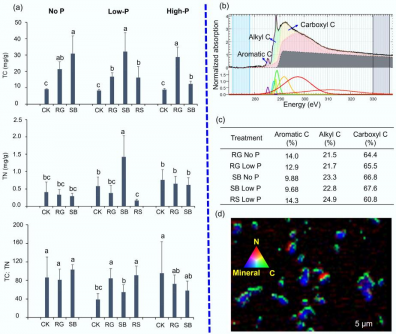BREAKING: New research confirms that native halophytes can transform toxic bauxite residue into viable soil through innovative root-driven processes. Published on September 24, 2025, by a team led by Longbin Huang at The University of Queensland, this groundbreaking study offers an eco-friendly solution to one of the world’s most critical environmental challenges.
Bauxite residue (BR), a hazardous byproduct of aluminum production, represents a staggering global issue, with billions of tons stored in expansive tailing dams. The extreme alkalinity and salinity of these deposits prevent natural vegetation growth and soil formation. Traditional rehabilitation methods rely on costly amendments such as gypsum and imported organic matter to neutralize the toxic waste, but these solutions are often impractical and expensive.
In a game-changing approach, researchers have turned to eco-engineering, using halophytes—salt-tolerant plants—to stimulate mineral weathering and generate organic carbon in situ. The study reveals that these resilient plants not only thrive in harsh conditions but also significantly reduce BR alkalinity and salinity, paving the way for sustainable soil rehabilitation.
The research utilized advanced analytical techniques such as quantitative X-ray diffraction (qXRD) and synchrotron-based X-ray absorption fine structure spectroscopy (XAFS). Over a span of nearly three years, the field experiment documented remarkable changes in BR mineralogy and chemistry following halophyte colonization. The results showed pH levels dropping from greater than 9.5 to 8.5–9.0 and electrical conductivity decreasing to below 3.0 mS·cm−1, successfully meeting established rehabilitation criteria.
According to the findings, plant activity reduced sodalite-like minerals by an impressive 60%, with significant associations between organic carbon, nitrogen, and minerals confirmed through scanning transmission X-ray microscopy (STXM). These transformations indicate that halophytes are capable of initiating early-stage soil formation, a crucial step toward ecological recovery in contaminated environments.
This research provides the first field-based evidence that halophytes can biologically drive the critical stages of soil formation in alkaline, organic-deficient bauxite residue. By naturally lowering pH values and enhancing organo-mineral interactions, these pioneering species create more hospitable conditions for future vegetation and ecosystem development.
In addition to improving soil health, the generation of iron-silicon-aluminum-rich amorphous minerals and stable organo-mineral complexes lays the groundwork for long-term soil stability, carbon sequestration, and biodiversity restoration.
The implications of this study are profound, offering a low-input rehabilitation strategy that could revolutionize how industries manage bauxite residue worldwide. As the global community grapples with mounting environmental concerns, this innovative plant-based eco-engineering approach could provide a sustainable pathway to restore damaged ecosystems.
Funding for this research was provided by the Australian Research Council Projects and industry partners including Rio Tinto (Aluminum) Ltd and Queensland Alumina Ltd (QAL).
Stay tuned for updates as this exciting research progresses, potentially reshaping environmental restoration practices across the globe.





